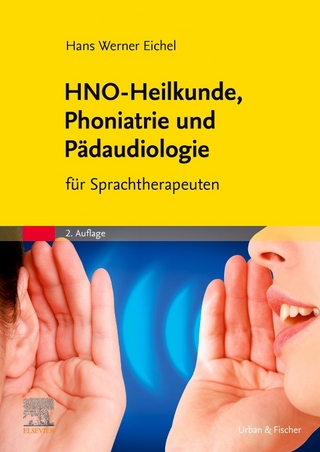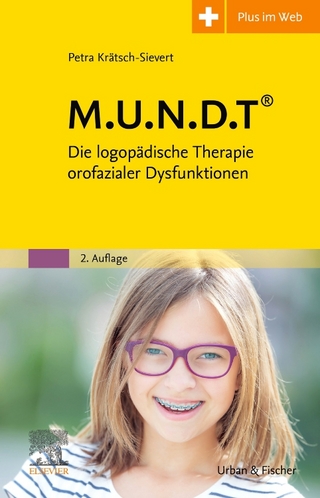
Introduction to Language Development
Plural Publishing Inc (Verlag)
978-1-63550-377-7 (ISBN)
Introduction to Language Development, Third Edition offers a highly accessible overview to the complexities of language development. The textbook is designed for use in language acquisition courses in undergraduate and graduate speech-language pathology programs to facilitate both teaching and learning. Complex terminology and theories are explained through definitions and examples to ensure that students are able to easily grasp the content. Within the third edition of this text, students are presented with language factors-syntax, semantics, phonology, morphology, and pragmatics-as well as the cognitive abilities that underlie language development. Multilingual and multicultural differences are explored throughout.
Sandra Levey, PhD, is Professor Emerita at the City University of New York (CUNY), Lehman College. She received her PhD in Speech-Language-Hearing Sciences at the Graduate Center of CUNY and a degree in linguistics at Stanford University, with a minor in African studies. Dr. Levey has been designated by the American Speech-Language-Hearing Association Board of Child Language and Language Disorders as a Board-Certified Specialist in Child Language. She has received research grants for study at Bayero University in Kano, Nigeria and as a research consultant in Bratislava, Slovakia. Dr. Levey was the conference coordinator of the Seventeenth Annual Stanford Child Language Research Forum that focused on multilingual research. Her research and publications have focused on multilingualism and multiculturalism. She is a member of the International Association of Communication Sciences and Disorders (IALP).
Preface
Acknowledgments
Contributors
Chapter 1. An Introduction to Language Acquisition
Sandra Levey
Chapter Objectives
Developmental Stages of Typical Language Development
Communication, Speech, and Language
Form
Content
Use
Written Language and Reading Abilities
Cognition
Language Differences
Summary
Key Words
Study Questions
References
Chapter 2. An Introduction to Theories of Language Development
Sandra Levey
Chapter Objectives
Speech Act Theory
Functional Approach to Language and Cognition
Behavioral Theory
Principles and Parameters Theory
Social Interaction Theory
Cognitive Theory
Emergentism
Summary
Key Words
Study Questions
References
Chapter 3. The Brain and Cognitive, Speech, and Language Development
Sandra Levey and Denise Cruz
Chapter Objectives
The Brain and Language
The Structure of the Neuron
The Central Nervous System
The Peripheral Nervous System
The Two Hemispheres of the Cerebrum: Right and Left Lobes
The Four Lobes of the Cerebrum: Speech, Language, and Cognitive Functions
The Arcuate Fasciculus
Subcortical Structures and Language Functions
The Brainstem
Cognitive Functions and the Brain
Skills Associated With the Brain
Neurological Disorders
Summary
Key Words
Study Questions
References
Chapter 4. Infant and Toddler Language Development
Sandra Levey
Chapter Objectives
An Overview of Infant and Toddler Language Development
Aspects of Children's Language Development
Parent/Caregiver and Child Interaction
Joint Attention and Joint Action
Phonological Development
Cognitive Development
The Development of Humor
The Formation of Schemas
The Development of Play
Morphological Development
Morphophonology
Syntactic Development
Pronoun Acquisition
Verbs
The Development of Negative, Interrogative, and Imperative Sentence Forms
Semantic Development
Pragmatic Development
Narrative Development
Summary
Key Words
Study Questions
References
Chapter 5. Preschool Language Development
Sandra Levey
Chapter Objectives
An Overview of Preschool Language Development
Preschool Aged Children's Conceptual Development
Language Development
Syntactic Development
Semantics
Metalinguistic Awareness
Pragmatics
Humor
Summary
Key Words
Study Questions
References
Chapter 6. Language Development in Middle and Late Childhood and Adolescence
Sandra Levey and Denise Cruz
Chapter Objectives
Early Childhood, Late Childhood, and Adolescence
Semantics
Syntactic and Morphological Development
Pragmatic Development
Literacy Skills in Early, Middle, and Later Grades
Summary
Key Words
Study Questions
References
Chapter 7. The Development of Literacy Skills
Sylvia F. Diehl
Chapter Objectives
The Development of Literacy
Emergent Literacy
Development of Code-Related Literacy
Meaning Related Literacy Developmental Milestones
Supporting Literacy Development in the Pre-School Years
Literacy Development in the Elementary School Years
Supporting Literacy Development in the Elementary School Years
Literacy Development in Adolescence
Supporting Adolescent Literacy Development
Updated Vocabulary Instruction Recommendation: Morphology and Multiple Word Meanings
Updated Comprehension Strategy Recommendation: Metacognitive Strategies
Updated Extended Discussion Recommendation: Facilitate Critical Thinking in Discussions
Updated Motivation Recommendation: Positive/Emphasis on Socioemotional Development
Updated Recommendation for Individualize Instruction: Tutoring
Added Recommendation
Summary
Key Words
Study Questions
References
Chapter 8. Bilingual Children's Language Development: Assessment and Intervention
Celeste Roseberry-McKibbin
Chapter Objectives
Bilingualism and Second Language Acquisition
Typical Processes of Second Language Acquisition
Simultaneous Versus Sequential Bilingual Acquisition
Types of Language Proficiency
Nonbiased Assessment: Principles and Strategies
Language Difference Versus Developmental Language Disorder: Impact of the Environment
Diagnostic Decisions
Legal Considerations
Nonbiased Assessment and Standardized Tests
The Advantages of Alternative Assessment
Strategies for the Use of Alternative Assessments
Utilizing the Services of Interpreters
The Use of Interpreters in Assessment
Intervention for EL Students With DLD: Options for Students Who Qualify for Special Education
Determining the Language(s) of Intervention
Potential Targets for Intervention
Summary
Key Words
Study Questions
References
Chapter 9. Language Development and Hearing
Brian J. Fligor
An Overview of the Role of Hearing in Language Development
Chapter Objectives
The Prevalence of Hearing Loss
An Explanation of Hearing Abilities
Types of Hearing Loss
Normal Hearing Sensitivity in Children
Hearing Assessment
Sound Intensity and Frequency
The Impact of a Hearing Loss on Language Development
Age of Onset of Hearing Loss
Signs of a Hearing Loss
Intervention
Devices Used for Hearing Habilitation: FM Systems, Hearing Aids, and Cochlear Implants
Summary
Key Words
Study Questions
References
Glossary
Index
| Erscheinungsdatum | 01.12.2022 |
|---|---|
| Zusatzinfo | 32 |
| Verlagsort | San Diego |
| Sprache | englisch |
| Maße | 178 x 254 mm |
| Themenwelt | Medizin / Pharmazie ► Gesundheitsfachberufe ► Logopädie |
| ISBN-10 | 1-63550-377-9 / 1635503779 |
| ISBN-13 | 978-1-63550-377-7 / 9781635503777 |
| Zustand | Neuware |
| Haben Sie eine Frage zum Produkt? |
aus dem Bereich


